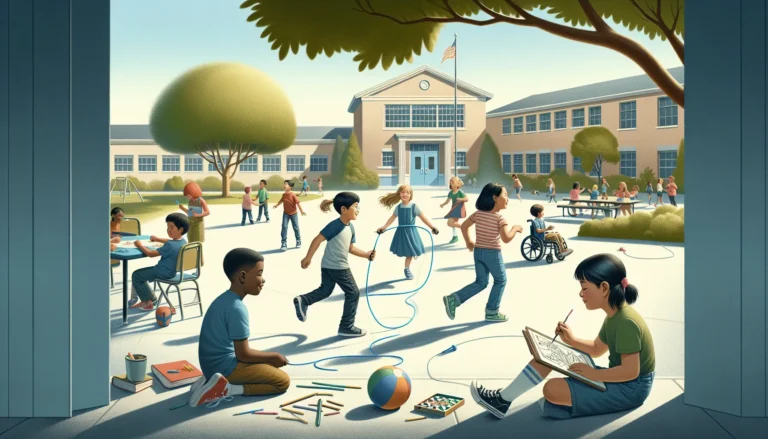In a world where traditional classrooms sometimes feel more like a scene from a horror movie, alternative learning schools are stepping in like the superheroes of education. They offer a refreshing take on learning, embracing creativity and individuality while keeping the boredom at bay. If you’re tired of the same old routine and want your child to thrive in an environment that sparks joy and curiosity, alternative schools might just be the answer.
Table of Contents
ToggleUnderstanding Alternative Learning Schools
Alternative learning schools offer distinctive educational approaches, emphasizing creativity and individuality. These institutions create engaging environments that encourage joy and curiosity.
Definition and Purpose
Alternative learning schools cater to students who thrive outside conventional education systems. They focus on meeting diverse learning needs through personalized instruction and innovative curricula. By prioritizing holistic development, these schools aim to foster critical thinking, problem-solving, and emotional intelligence. The purpose centers on making education enjoyable while addressing the unique strengths and challenges of each student.
Types of Alternative Learning Schools
Numerous types of alternative learning schools exist, each with unique characteristics. Montessori schools emphasize self-directed learning and hands-on activities, allowing students to learn at their own pace. Waldorf schools integrate creative arts and academics, promoting holistic development with a strong focus on imagination. Another type, charter schools, operate with greater flexibility in curriculum design and teaching methods while remaining accountable for performance. Online alternative schools provide flexible learning options, enabling students to learn from home or in non-traditional settings. Each type offers distinct advantages, making them appealing choices for families exploring educational alternatives.
Benefits of Alternative Learning Schools
Alternative learning schools offer unique advantages tailored to diverse student needs. They create environments emphasizing creativity and individuality, fostering supportive conditions for successful learning.
Personalized Learning Approaches
Personalized learning approaches focus on individual student strengths. By assessing students’ unique learning styles, these schools tailor educational methods to enhance engagement. Teachers in alternative settings often create customized lesson plans based on each child’s interests and pace. This individualized attention promotes deeper understanding and retention, transforming academic experiences into meaningful journeys for every learner.
Flexible Curriculum Options
Flexible curriculum options adapt to varying student interests and needs. Students explore diverse subjects and skills beyond traditional requirements, fostering a love for learning. Schools may integrate project-based learning, experiential opportunities, or interdisciplinary courses, allowing students to connect learning with real-world applications. Such flexibility supports students in pursuing passions, nurturing well-rounded individuals prepared for life’s challenges.
How to Find Alternative Learning Schools Near Me
Finding alternative learning schools requires research and exploration. Parents can take advantage of various methods to identify the best options available locally.
Online Resources and Directories
Online directories contain extensive listings of alternative schools. Websites like GreatSchools and Niche provide detailed profiles, reviews, and ratings for different institutions. These platforms offer filters that allow parents to search based on location, curriculum type, and other criteria. Other resources include local educational forums and social media groups dedicated to alternative education. Engaging with these online communities enables parents to gather insights from others with firsthand experiences.
Community Recommendations
Community recommendations hold significant value in the search for alternative schools. Local parents, educators, and community organizations often share experiences and suggest schools that cater to specific learning styles. Attending local educational fairs or parent-teacher meetings creates opportunities for discussions about different educational philosophies. Utilizing resources like neighborhood Facebook groups or forums can help parents connect with other families interested in alternative education. Personal testimonials frequently provide valuable information about the strengths and weaknesses of various schools.
Factors to Consider When Choosing a School
Choosing the right alternative learning school involves several key factors. Understanding these elements helps ensure the best fit for a child’s educational needs.
Location and Accessibility
Location significantly influences a school’s viability for families. Proximity to home matters, as shorter commutes reduce travel time and stress. Accessibility affects participation in extracurricular activities, parent-teacher meetings, and community events. It’s essential to consider public transportation options and available parking. Schools situated in safe neighborhoods often provide peace of mind for parents. Engaging with local residents can offer insights on traffic patterns and safety concerns around the school.
Programs Offered
Programs offered by alternative learning schools vary widely. Each institution may focus on particular educational philosophies, such as Montessori, Waldorf, or charter models. Specialized programs may include arts integration, STEM-focused curricula, or language immersion. Families should assess whether the school aligns with their child’s interests and learning style. Extracurricular activities also contribute to student engagement. A diverse program selection, including athletics and arts, fosters well-rounded development. Parents must explore how each program caters to social, emotional, and academic growth, ensuring a comprehensive educational experience.
Conclusion
Exploring alternative learning schools can open new doors for children’s education. These institutions prioritize individual learning styles and foster creativity in ways traditional schools may not. By focusing on personalized instruction and holistic development, they create enriching environments that encourage curiosity and critical thinking.
For parents seeking an engaging educational experience for their children, alternative schools offer a variety of options tailored to diverse needs. With the right research and community insights, families can find the perfect fit that aligns with their child’s unique strengths and interests. Embracing alternative education may just be the key to unlocking a brighter future for students.




